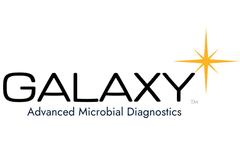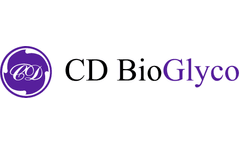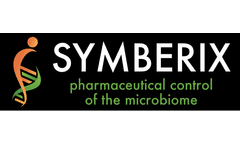Intestinal Microflora Articles & Analysis
24 articles found
The advent of organoid technology has transformed biomedical research through the development of 3D models that precisely replicate human organ structures and functions in a physiological context. Creative Bioarray establishes itself as a world leader in life science innovation through its complete range of organoid services that enhance drug discovery, disease modeling, and personalized ...
Hydrogen and methane breath testing (HMBT) is a non-invasive diagnostic tool frequently used to assess small intestinal bacterial overgrowth (SIBO) and carbohydrate malabsorption disorders such as lactose and fructose intolerance. Despite its widespread use in adults, its application in children is less standardised, and clinicians often face uncertainties about adapting adult protocols for the ...
Bile, a complex fluid produced by the liver and stored in the gallbladder, plays a crucial role in the digestion and absorption of fats, fat-soluble vitamins, and other essential nutrients. Ox bile extract powder, derived from the bile of oxen, is a natural supplement that has garnered significant interest in the scientific and healthcare communities for its versatile physiological functions and ...
Bile acids are synthesized in the liver from cholesterol as a raw material. As a natural "emulsifier", they can promote the dissolution, digestion and absorption of fats, fat-soluble vitamins, etc. Meanwhile, as an important signaling molecule, bile acids can activate the relevant receptors to maintain the homeostasis of hepatic glucose and lipid metabolism, and interact with gut bacteria to ...
Probiotics are living microorganisms that offer numerous health benefits when consumed in adequate amounts. These beneficial bacteria can be found in various fermented foods such as yogurt, kefir, sauerkraut, and kimchi, as well as in dietary supplements. The term "probiotic" is derived from the Greek words "pro" and "biotic," which mean "for life." Probiotics have gained popularity in recent ...
Disease-causing microbes are often found in the human microbiome. So, when does the presence of pathogenic microbes indicate an infection? And when does the presence of infection explain disease? What is an infection? What is a disease? A disease associated with microbes is the outcome of interaction(s) between a microbe(s) and its host in which the host suffers some sort of damage. ...
Gut microbes are considered "virtual organs" that influence host health and are involved in disease research. The human gut microbiota has a large gene pool, encoding approximately 100-150 times more genes than the human genome, and contains a rich resource of enzymes with the ability to metabolize drugs. The diversity of gut bacteria also affects the mental health of the host. Microbiomes from ...
Symbiotic microbial groups within the digestive tract of herbivores are the main source of depolymerized lignocellulases. The dolphin is the largest extant rodent, usually living in the Pantanal wetland and Amazon basin, and is also known as the "king of grass" due to its diet based on grasses and aquatic plants. They can efficiently depolymerize and utilize lignocellulosic biomass through ...
The link between the vaginal microbiome and pregnancy outcomes is so strong that someone’s vaginal microbiome can actually be used to predict IVF success What is the vaginal microbiome? Your vaginal microbiome is the community of microbes living in your vagina. A healthy vaginal microbiome typically has low diversity and is dominated by a type of good bacteria called Lactobacillus that ...
ByJuno Bio
The Use of Microbiome Sequencing in Cancer Research A growing body of evidence now suggests that human microbial dysbiosis has a crucial role in cancer development and progression. Unlike earlier studies relying on culturing bacteria from the tissue of cancer, high-throughput sequencing methods have enabled genotyping the microbial ecosystem within cancer tissue from hundreds to thousands of ...
Science is a powerful tool for understanding how the world we live in works. This knowledge, when used wisely, has had and will continue to have dramatic impacts on human welfare. Unfortunately it can be challenging for the layman and even for many scientists to sort out what is real from what is not. It is estimated by some that 50% or more of the papers published in peer reviewed scientific ...
With rapid development in sequencing technology, researchers can better assess the effect of the gut microbiome on human health. Human beings have a symbiotic relationship with the microbiota since birth. The environment, proximity to other humans and animals, diet, genetics, and time changes can all affect the microbial composition of our skin, mouth, and intestines. Compared with other ...
A large part of bacterial, archaeal, viral, and fungal microbial taxa consists of the human microbiome. While many of these microorganisms are commensal, some are harmful to humans and many are symbiotic. Our livelihoods are strongly intertwined with the microbes we allocate our bodies with, regardless of whether their appearance is advantageous, insignificant, or harmful. Over the past few ...
The large intestine is composed of intestinal epithelial cells (IECs), which form an intestinal barrier between the microbiota in the intestinal lumen and surrounding tissues. ...
Advanced microphysiological systems can replicate aspects of intestinal complexity, such as epithelium self-renewal by stem cells in in vitro crypts or the interactions of microbes and intestinal epithelium mediated by a mucus layer. Availability of such models is key to progress in compound screening, disease modeling, and microbiome research. Defining a Niche A niche is a multidimensional ...
Gene-Editing Opportunities for RepliGut® Models Altis Biosystems has developed RepliGut®, a next-generation commercial intestinal tissue model platform for in vitro testing during drug development and for basic science applications. The RepliGut® platform produces a polarized monolayer of human intestinal stem and differentiated cells — either ...
The microbiome has been shown to play roles in many different disease processes and is implicated in many more, from infectious and gastrointestinal diseases to autoimmune and neurological disorders. Advanced models of the gut leveraging intestinal and colonic stem cells are enabling the development of more reliable and robust systems for evaluating the impact of changes in the microbiome on gut ...
Nonalcoholic fatty liver disease (NAFLD) is associated with obesity but also found in non-obese individuals. Gut microbiome profiles of 171 Asians with biopsy-proven NAFLD and 31 non-NAFLD controls are analyzed using 16S rRNA sequencing; an independent Western cohort is used for external validation. Subjects are classified into three subgroups according to histological spectra of NAFLD or ...
Durham, NC (April 28, 2020) - A review article published in PNAS highlights Symberix's efforts to understand the role of the human microbiota in drug efficacy and toxicity. Symberix co-founder Matt Redinbo is featured in the article alongside other leaders from the emerging field of “pharmacomicrobiomics” -- the study of mechanisms behind the microbial impact on drug metabolism. ...
MedBiome’s founders reported in Microbiome the development of the RapidAIM platform to screen compounds against individual microbiomes in vitro. They tested 43 compounds (including 4 antibiotics) against 5 individual microbiomes using the RapidAIM technology. The RapidAIM workflow provides insights into microbiome absolute abundance and functional responses to ...














